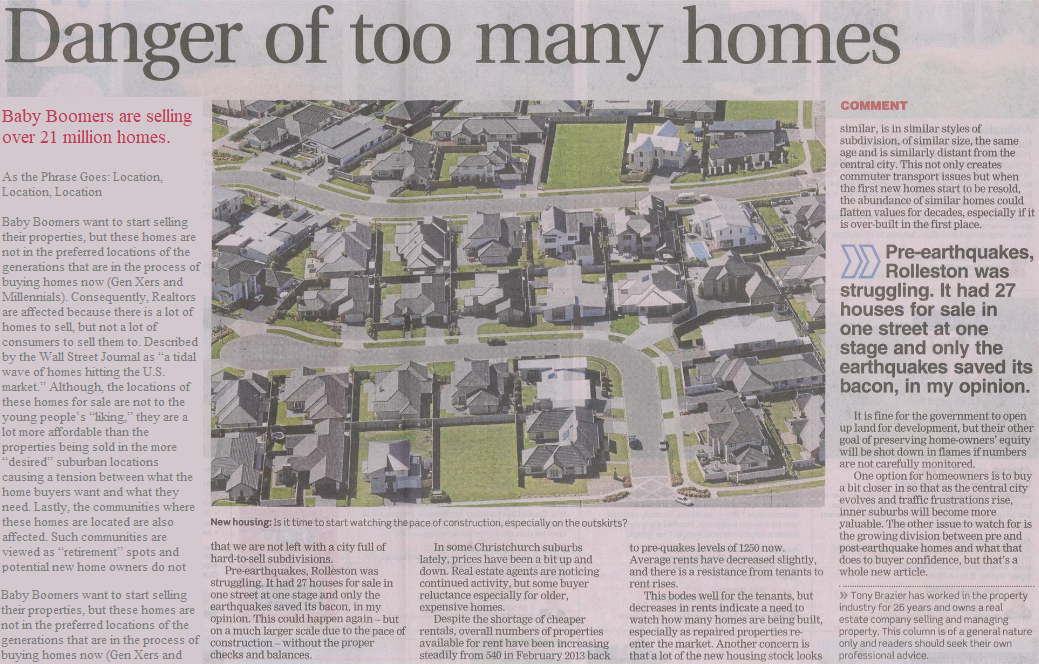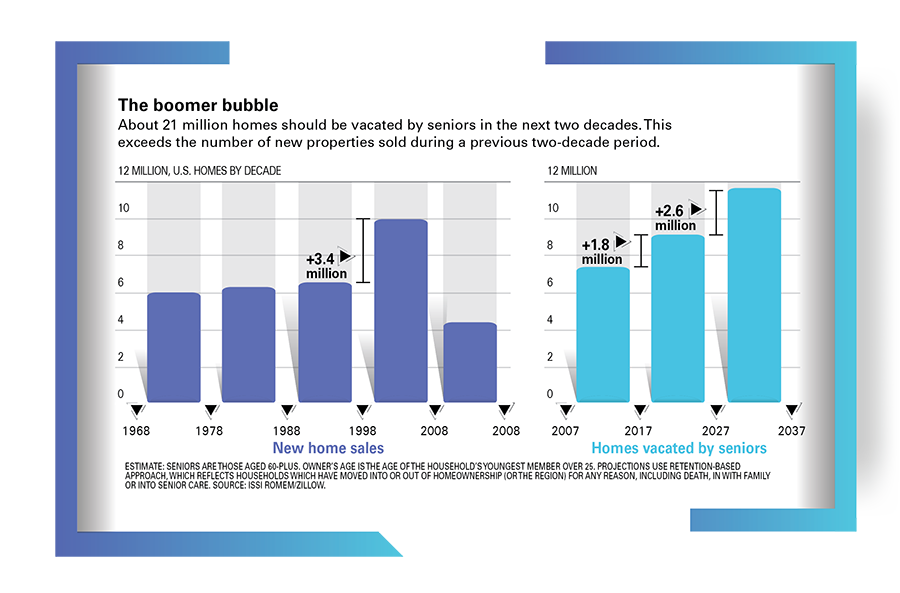Baby Boomers are selling over 21 million homes… what could this mean?
Tue Jan 7, 2020 by Oppenheim Law on Real Estate

Despite the ever-shrinking housing supply in the United States, about 21 million homes are expected to be vacated in the next 20 years. Why? Baby Boomers.
As the Phrase Goes: Location, Location, Location
Baby Boomers want to start selling their properties, but these homes are not in the preferred locations of the generations that are in the process of buying homes now (Gen Xers and Millennials). Consequently, Realtors are affected because there is a lot of homes to sell, but not a lot of consumers to sell them to. Described by the Wall Street Journal as “a tidal wave of homes hitting the U.S. market.” Although, the locations of these homes for sale are not to the young people’s “liking,” they are a lot more affordable than the properties being sold in the more “desired” suburban locations causing a tension between what the home buyers want and what they need. Lastly, the communities where these homes are located are also affected. Such communities are viewed as “retirement” spots and potential new home owners do not want to live in such communities, leading to a lack of residents and therefore low economic movement. As illustrated by Figure 1, the communities most affected are those in Florida and Arizona.

But Wait, it’s Not All Bad News!
In recent years, the United States has suffered heavily from a shortage of homes for sale, causing higher prices. The higher prices have led to less people being able to buy homes. Yet, the trend of Baby Boomers selling their homes is expected to cause an increase in economic movement. These low prices will eventually lead to an increase in demand for such houses; cause a pressure to buy. As mentioned by Jordan Rappaport, senior economist at the Federal Reserve Bank in Kansas City, “affordable cities in the Midwest will appeal to millennials and Gen Xers due to other options being just too expensive.”
Something can be done about this historical anomaly: a change in image is all that is needed
A historical anomaly is a deviation from the “expected” or common. Therefore, as Realtors are in the process of selling the Baby Boomer’s homes, they can influence the way millennials and Gen Xers think about the communities. Instead of viewing such communities as retirement cities, the new home owners can start viewing them as opportunities for the future. Realtors can highlight that even though the communities are not suburban cities, they are filled with opportunities to grow economically and socially. All while assuring calmness and safety. The communities need to change some of their set standards if they want to increase the demand for the homes for sale. One way is by stopping the requirement for a resident to be 55 or older. These age requirements limit the size of the potential market of consumers of the homes. All this could be appealing to millennials and Gen Xers, as they start to have the usual lifestyle shift where they look for a community to settle down and start a family in. That being stated, the majority of such “retirement” communities have already started to evolve for the new buyers’ wants and needs by adding playgrounds and schools. The towns are getting ready for the new set of residents. Finally, if that is not the solution, large institutional investors will likely start buying these homes and renting them out.
From the trenches,
Roy Oppenheim.


Leave a Reply